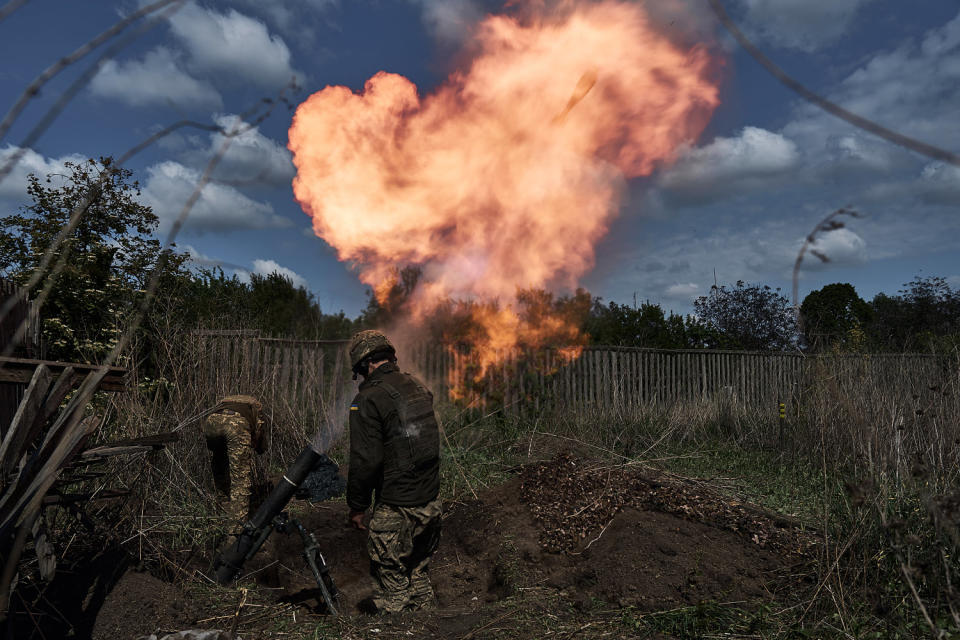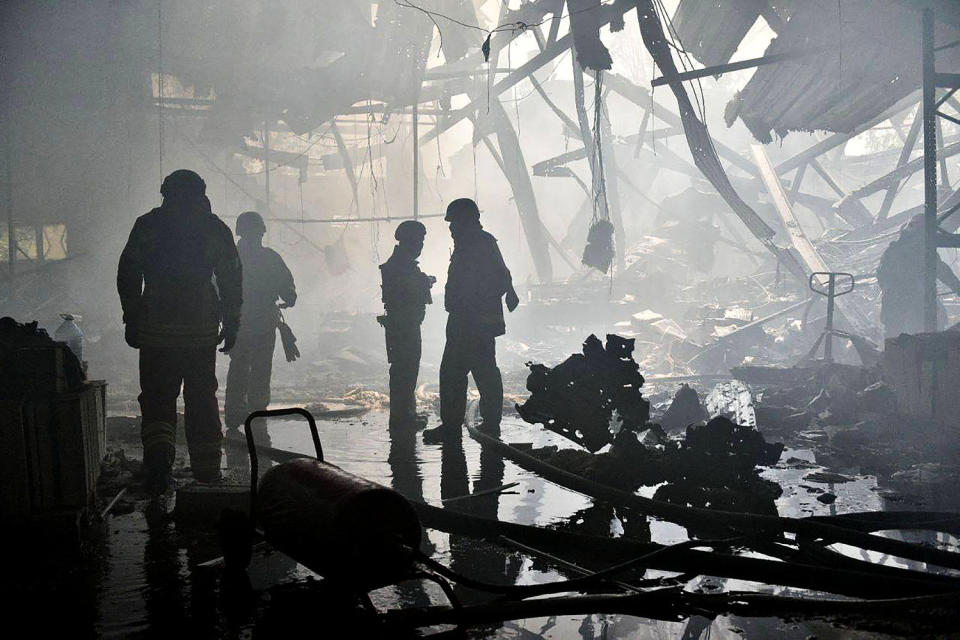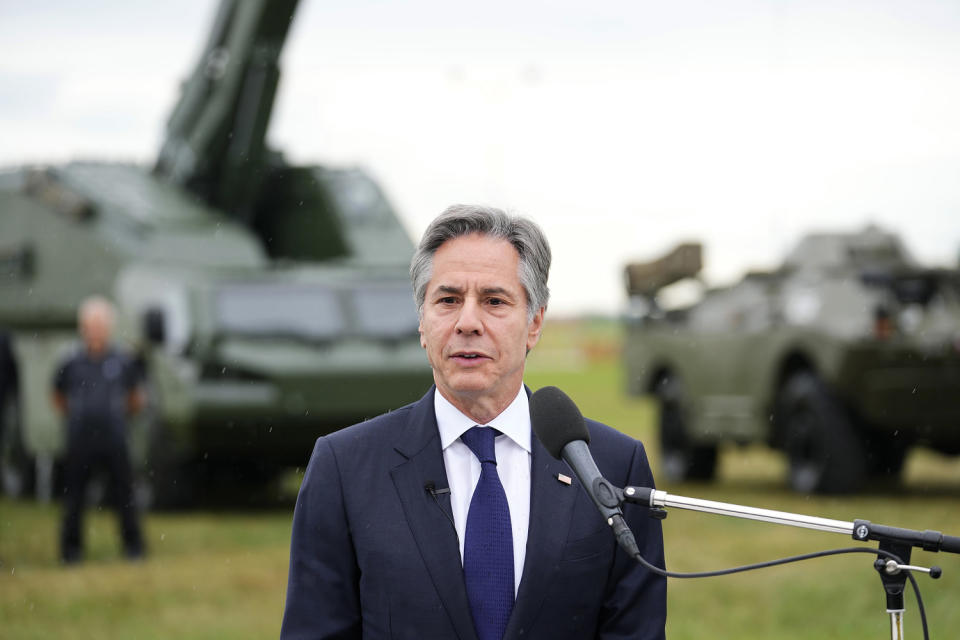When it comes to America continued desire to be a warring nation, there is little distinction between the two political parties. Both the Democratic and Republican Party are heavily invested in the concept of war as a means of maintaining America’s hegemonic control over other nations on our planet.(mb)
Let Ukraine use Western weapons to strike targets inside Russia.
That message, long a priority for Kyiv and its fiercest backers, is now being voiced by a growing number of Western leaders. The United States has so far remained unmoved by this pressure, putting it at odds with allies — and in the company of the Kremlin, which has warned against such a move.
But there are signs this could soon change.
The debate inside the Biden administration over the issue is ongoing, and some top officials back lifting the restrictions on how Ukraine uses weapons provided by Washington, two sources with knowledge of the matter told NBC News.
That debate has gained urgency since Russia launched a new cross-border offensive in Ukraine’s northeastern Kharkiv region earlier this month, and Kyiv has warned that it could also be massing troops for another incursion in neighboring Sumy.
Ukraine feels it has been left handicapped, arguing that the restrictions on its use of Western-supplied weapons have given Moscow an unfair advantage.
Russia “can use the military infrastructure on its territory for the war against Ukraine without any obstacles,” said Mykola Bielieskov, a research fellow at Ukraine’s National Institute for Strategic Studies, a government research group.
“As a result, there is a powerful asymmetry,” Bielieskov, based in Kyiv, told NBC News on Wednesday. “This has been talked about for a long time. It’s just that the Russian offensive in the Kharkiv region clearly showed this.”

The new urgency from Kyiv, which is still waiting for crucial U.S. military aid, has prompted a growing list of Western officials to back the idea of removing the restrictions on hitting targets inside Russia.
For much of the war, Kyiv’s partners have drawn a solid red line at letting Ukraine use the weapons they supply inside Russian territory, fearing an escalation from the Kremlin that could turn the conflict into a World War III.
The Biden administration has been consistent in this stance, perhaps worried that Russian President Vladimir Putin could retaliate using nuclear weapons — which he has regularly threatened throughout the conflict.
But with Ukraine outnumbered, outgunned and on the back foot, Kyiv has been making a public case for its allies to loosen their restrictions.
And it seems to be working.
French President Emmanuel Macron became the latest high-profile backer of the idea Tuesday. He suggested Ukraine should be allowed to hit military targets inside Russia from which missiles were being fired at Ukrainian territory, an apparent compromise position.
He was joined by German leader Olaf Scholz, who had resisted the idea but agreed to the concept Tuesday.
It comes on the back of NATO chief Jens Stoltenberg’s repeated pleas to let Ukraine use Western-supplied weapons to hit targets inside Russia, saying that not doing so hampers Kyiv’s ability “to defend themselves.” It’s a view shared by a number of European members of the alliance, including the United Kingdom, Sweden and Poland.
In previous debates inside the Biden administration over how far to go in arming Ukraine, Secretary of State Antony Blinken and CIA Director William Burns have staked out a bolder stance, supporting the provision of longer-range missiles and other weapons — and have often prevailed following appeals from lawmakers and European governments.
And on Wednesday, Blinken appeared to leave room for a shift on this issue, too.
“We haven’t encouraged or enabled strikes outside of Ukraine. Ukraine, as I’ve said before, has to make its own decisions about the best way to effectively defend itself,” he said during a trip to Europe that will include a NATO meeting Thursday. A “hallmark” of U.S. support for Ukraine, he said, “has been to adapt.”
“As the conditions have changed, as the battlefield has changed, as what Russia does has changed,” he added. “We’ve adapted and adjusted too and I’m confident we’ll continue to do that.”

The Kremlin has sought to ward off the move, with Putin warning European NATO states Tuesday that they were playing with fire and risking “global conflict.”
Moscow recently staged exercises to simulate the use of tactical nuclear weapons, in a likely signal to the West against deeper involvement in Ukraine.
The risk of escalation seems to be exactly what’s kept Biden reluctant to allow the use of American weapons on Russian soil, said Christopher Tuck, an expert in conflict and security at King’s College London.
“Putin’s comments should be seen in this light: he is attempting to feed the fears of those who believe that crossing this U.S. red line would move NATO’s relationship with Russia into a new and dangerous phase,” he said.
It’s clear from frustration building in Ukraine that it will not violate the ban unless the U.S. softens its position.
“We cannot, and this is a fact, risk the support of partners,” Ukrainian President Volodymyr Zelenskyy said Tuesday. “Therefore, we do not use the weapons of our partners on the territory of the Russian Federation. And we appeal: give us the opportunity to retaliate against their military forces.”
His comments came after a group of lawmakers from both parties last week publicly urged the White House to give Kyiv the green light.
“Ukrainians have been unable to defend themselves due to the Administration’s current policy. It is essential the Biden Administration allows Ukraine’s military leaders an ability to conduct a full spectrum of operations necessary to respond to Russia’s unprovoked attack on their sovereign land,” the lawmakers wrote in a letter to Defense Secretary Lloyd Austin.
But the Biden administration’s fears might be exacerbated by Ukraine’s increasingly daring use of its own weapons, mostly drones, to strike strategic targets deep inside Russia such as oil refineries.

A Ukrainian drone targeted a long-range radar deep inside Russia that forms part of the country’s ballistic missile early warning system Sunday, a Ukrainian intelligence official told NBC News. The official wanted to remain anonymous because they are not authorized to disclose details of the strike, which appeared to be the second in a week against infrastructure used by Moscow to monitor Ukraine’s military activities.
Although the U.S. is likely to remove the restrictions on the use of its weapons inside Russia eventually, Tuck said, Ukraine would have to be careful about the sorts of targets that it attacks and would need to avoid inflicting civilian casualties.
It’s also important to put any U.S. decision into perspective, he added.
“Russian forces have made slow progress in Kharkiv oblast, so it is likely that a U.S. decision would be in time to make a militarily useful contribution to the fight there,” Tuck said. “But it isn’t a decision that is going to change the course of the war.”
This article was originally published on NBCNews.com



















